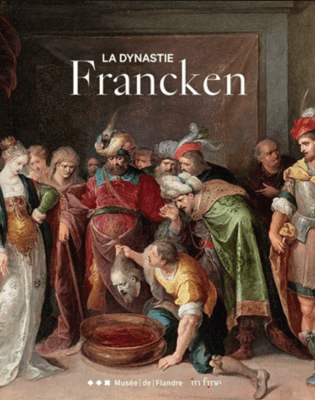During the last decade the Musée de Flandre in the picturesque Northern French city of Cassel has received a certain renown for its exhibitions of Flemish seventeenth-century painting, sometimes focusing on particular subjects and themes, sometimes devoted to the oeuvre of particular artists. The recently organized show of the oeuvre of the various members of the Francken family of painters, active in Antwerp from about the middle of the sixteenth century until 1717, the year of the death of Constantijn Francken, the last member of this important dynasty of artists, fits in the latter group.
The exhibition benefited greatly from new insights into the oeuvre of some of the members of this dynasty of painters, more specifically from Natasja Peeters’s research on the elder Franckens, the brothers Hieronymus (1540-1610), Frans the Elder (1542-1616) and Ambrosius the Elder (1544-1618), and from Ursula Härting’s work on Frans the Elder’s son Frans Francken the Younger (1581-1642), the best known and most versatile member of the family. Both authors contribute brief but insightful overviews of the personalities and artistic activities of these members of the Francken dynasty. These two introductory essays are complemented by useful texts illuminating certain and to some extent hardly known aspects of the Franckens’ artistic activities, by Guy-Michel Leproux, Danielle Maufort and Cécile Laffon. Together with Jahel Sanzsalazar and Sandrine Vézilier-Dusart, these authors are also responsible for the catalogue entries on the exhibited paintings and drawings.
The ancestor of the Francken family of painters was Nicolaes Francken, who was born at Herentals around 1520. Unfortunately, nothing is known of his artistic activity. Late in his life he moved to Antwerp, where he died in 1596. His sons were the above mentioned Ambrosius, Hieronymus and Frans Francken, who had preceded him in establishing themselves in Antwerp, where they must have joined the workshop of Frans Floris (1519/20-1570) around 1560. Soon Hieronymus left Antwerp for Paris, where his style became influenced to some extent by the mannerism of the school of Fontainebleau. The two remaining brothers made their careers in Antwerp, attempting a compromise between Floris’s dynamic and emphatically italianate style and the tradition of Early Netherlandish painting, as found in the works of Rogier van der Weyden and Quentin Massys, characterized by an iconic style, a descriptive realism and clarity in structure. This style perfectly met the demands of the early Counter Reformation. Ambrosius and Frans were among the first painters in Antwerp to successfully replace or restore the many altarpieces that had been destroyed or severely damaged during the Calvinist iconoclasms of 1566 and 1581.
Frans Francken the Younger painted altarpieces only exceptionally and that at the beginning of his career. He must have realized quickly that his talent was more suitable for cabinet size history paintings, in the vein of his elder colleagues Jan Brueghel the Elder (1568-1625) and Hendrik van Balen the Elder (1574/75-1632). His earliest work, datable between c. 1600 and c. 1620, betrays some influence from the Brueghel workshop, while occasionally also relying on the work of painters like Gillis Mostaert (1534-1598) and others. The style of his many biblical, mythological and allegorical scenes quickly evolved to a moderate mannerism, characterized by a combination of motifs and composition structures derived from the Raphael school and the Zuccaris, with elements taken from northern artists like Albrecht Dürer and Lucas van Leyden. Frans the Younger’s most productive period began around 1620. He became famous for eclectically assembling all kinds of figures clad in colorful attire, often covered with exotic-looking headdresses, like turbans and Phrygian caps, to mention a few. These figures are shown acting with lively gestures. Ursula Härting, in my opinion correctly, suggests connecting the compositions with contemporary theatre and the repertoire of the contemporary Antwerp rhetoricians. The more dynamic style of these later compositions may perhaps be seen as Francken’s reaction to Rubens’s later oeuvre. These crowded scenes remain characteristic of Frans’s style until the end of his career, except that his initial bright coloring was replaced by a more monochromatic brownish palette, possibly under the influence of contemporary Dutch cabinet painting. The popularity of these compositions may further be confirmed by the undeniable influence they had on similar works by younger contemporaries, as e.g, Hans Jordaens III (c. 1595-1643).
The exhibition and its catalogue offer a good overview of the variety of the artistic output of this versatile family of Antwerp artists. Especially the oeuvre of the Francken family’s most important and best known member, Frans the Younger, was effectively represented thanks to an intelligent and well-balanced choice. On the other hand, the oeuvre of the latter’s father and especially his uncle Ambrosius might have deserved a better display. Thus it is a pity that no examples of Ambrosius’s altarpieces for Antwerp churches, his most important artistic production, were represented in the exhibition.
Hans Vlieghe
Centrum Rubenianum, Antwerp
